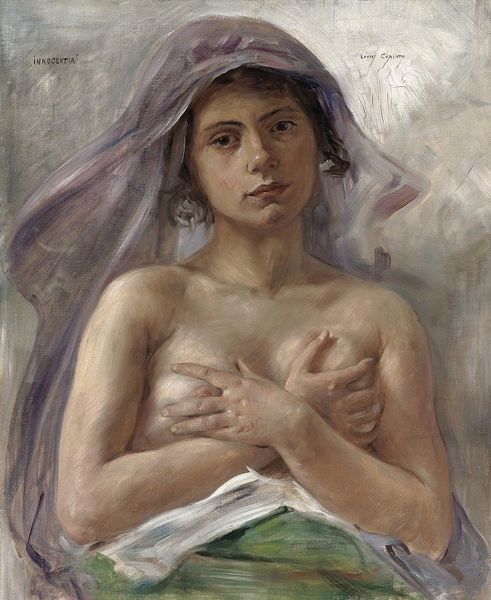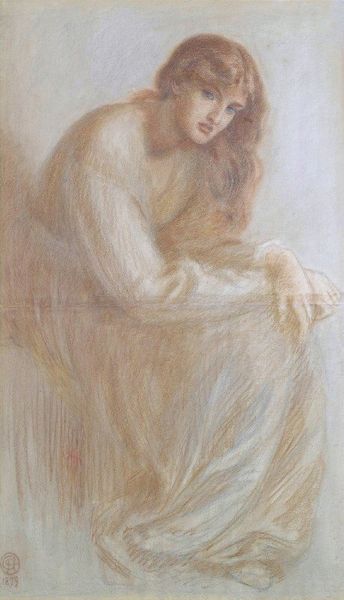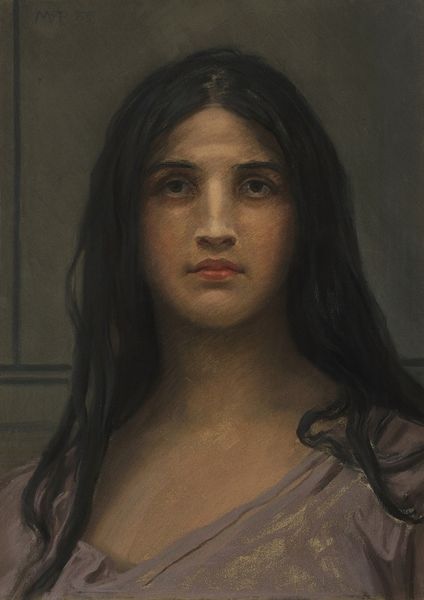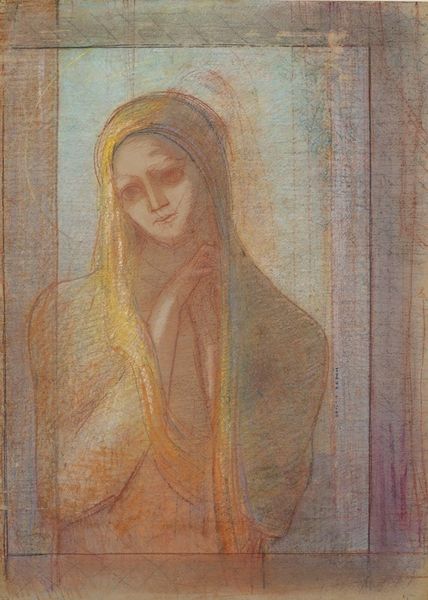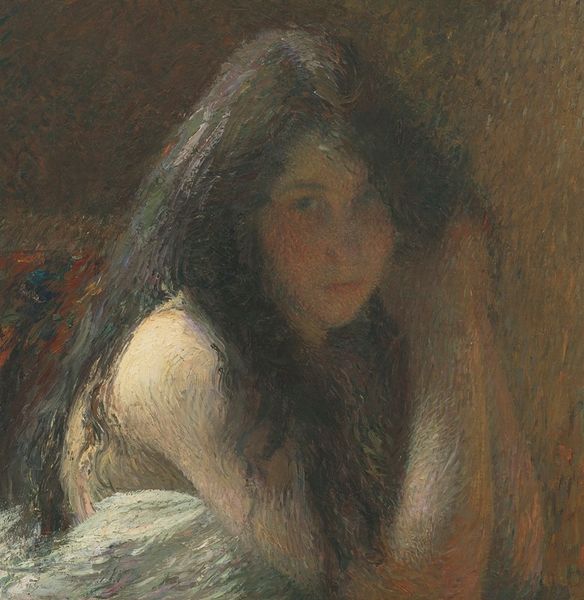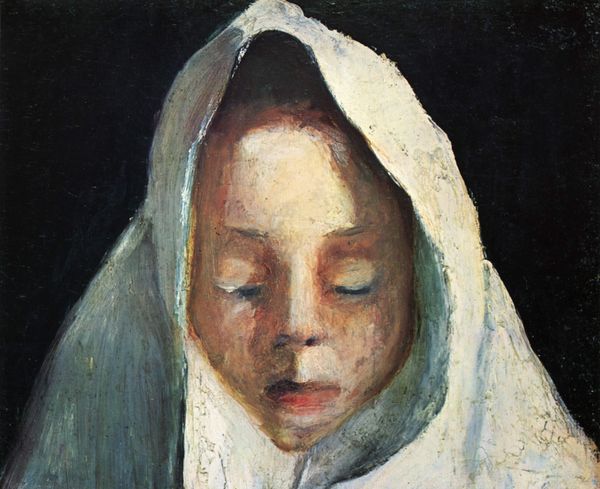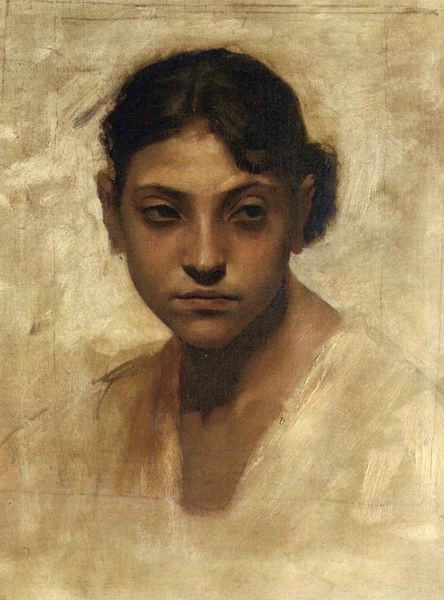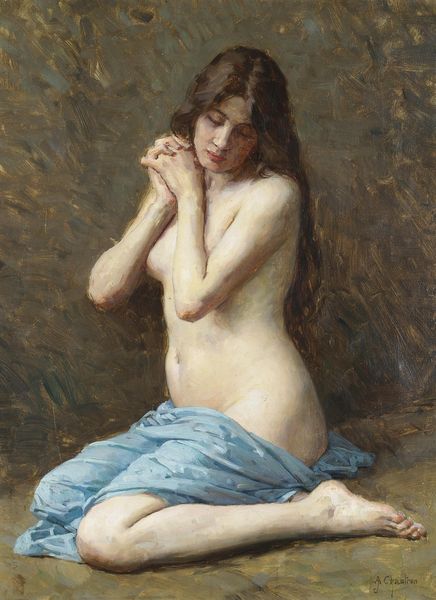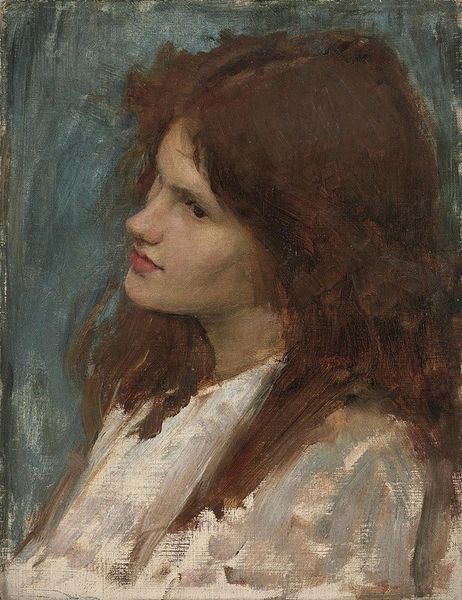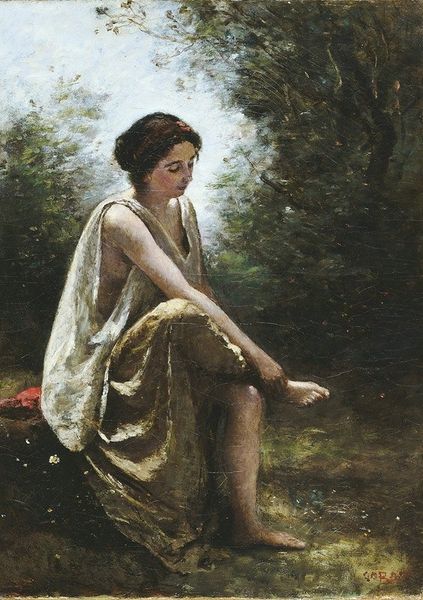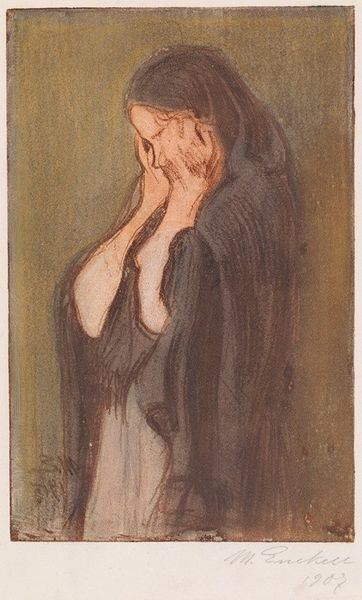
oil-paint, impasto
#
portrait
#
figurative
#
art-nouveau
#
oil-paint
#
oil painting
#
impasto
#
symbolism
#
portrait art
Copyright: Public Domain: Artvee
Curator: Welcome. We're standing before Alphonse Mucha's oil painting, "Portrait of a Girl." Editor: My immediate reaction is a sense of introspection, or maybe quiet sorrow. Her gaze feels very direct, yet her body language suggests withdrawal. Curator: It’s interesting you pick up on the sorrow. Mucha is mostly celebrated for his vibrant posters and decorative panels featuring strong, almost goddess-like women, so this is an atypical subject choice, much less jubilant and more in tune with symbolist ideals. Editor: It definitely departs from his more decorative works! The impasto gives the drapery a beautiful weight, especially around her face. It feels almost sculptural, as if she's emerging from a cloud of fabric. And yet that solemnity… Did something happen in his life that might explain the shift towards this heavier mood? Curator: The historical records offer little to clarify that, but we might explore it in terms of the rising tide of nationalist sentiment in Bohemia and Moravia, or even his deep involvement in Freemasonry which encouraged reflection on universal themes of existence. His public art served a national identity and hope for the future while these more private paintings reflected, perhaps, internal uncertainty about the very possibilities of such future. Editor: I see her hands clasped together. It reads as if she’s holding on to something or holding herself back. It reminds me a little of Modigliani, actually – same elongation, but absent that distinctive inner spark of fire. Curator: She does seem subdued, a study in reserved emotions. Perhaps this quietness represents a tension or contrast that speaks to broader cultural forces acting on representations of women during this period. Editor: Do you mean how society was attempting to tame, perhaps literally veil, female emotions during the rise of modernism? Curator: Precisely. This image is interesting because it represents simultaneously resistance and surrender, not necessarily a complete win or loss for those forces but a kind of visual stalemate of hope, but a future that is nonetheless unknown. Editor: So, in a way, she is a poignant meditation on the anxieties of the present, which now seems appropriate given where and how this work lives in our collective consciousness? Curator: Indeed. A fittingly complicated and affecting figure to usher us onward to the next stop.
Comments
No comments
Be the first to comment and join the conversation on the ultimate creative platform.
